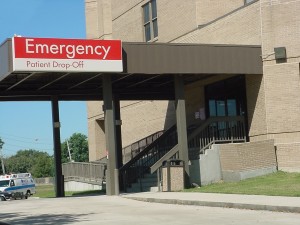 1. In most cases, anaphylaxis occurs when at least 2 organ systems are affected. See page 9 of this World Allergy Organization slide share for a list of symptoms categorized by organ systems. In few cases, anaphylaxis can affect only one body system (a sudden drop in blood pressure and loss of consciousness).
1. In most cases, anaphylaxis occurs when at least 2 organ systems are affected. See page 9 of this World Allergy Organization slide share for a list of symptoms categorized by organ systems. In few cases, anaphylaxis can affect only one body system (a sudden drop in blood pressure and loss of consciousness).
2. Epinephrine is the only medication known to stop and reverse anaphylaxis.
3. Antihistamines (like
Benadryl) do not work fast enough to stop an anaphylactic reaction and as they relieve some of the initial (more mild) symptoms of anaphylaxis, it becomes harder to recognize a true anaphylactic reaction
early enough for the administration of epinephrine to take effect.
4. Epinephrine should be given immediately upon recognizing an anaphylactic reaction. Any delay in the administration of epinephrine could result in a fatality.
5. If the first injection of epinephrine does not reverse the symptoms within a few minutes, a second injection may be needed. Always carry 2 epinephrine auto injectors at all times.
6. Up to 20% of people who have symptoms of anaphylaxis experience a
second reaction related to the first – without any additional exposure to the allergen that caused the first allergic reaction. Always after administering epinephrine, call 911 and seek emergency medical attention, even if the anaphylaxis seems to have been reversed.
7. In most cases of a known ingestion of a food allergen (including contact with saliva even if the food product is not swallowed), epinephrine should be administered and the EMS system activated (911),
even if no anaphylactic symptoms are present.
8. The risk of not giving epinephrine in the case of an anaphylactic reaction is far greater than the
risks associated with unnecessarily giving epinephrine in a non-allergic reaction.
11. Approximately 79% of allergic reactions at school occur in the classroom vs. the 12% that occur in the cafeteria.

New to food allergies? Get started here, then subscribe to our site and join our social network so you don’t miss anything new!
 1. In most cases, anaphylaxis occurs when at least 2 organ systems are affected. See page 9 of this World Allergy Organization slide share for a list of symptoms categorized by organ systems. In few cases, anaphylaxis can affect only one body system (a sudden drop in blood pressure and loss of consciousness).
1. In most cases, anaphylaxis occurs when at least 2 organ systems are affected. See page 9 of this World Allergy Organization slide share for a list of symptoms categorized by organ systems. In few cases, anaphylaxis can affect only one body system (a sudden drop in blood pressure and loss of consciousness).



